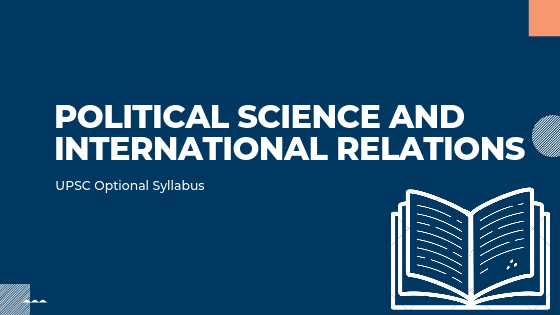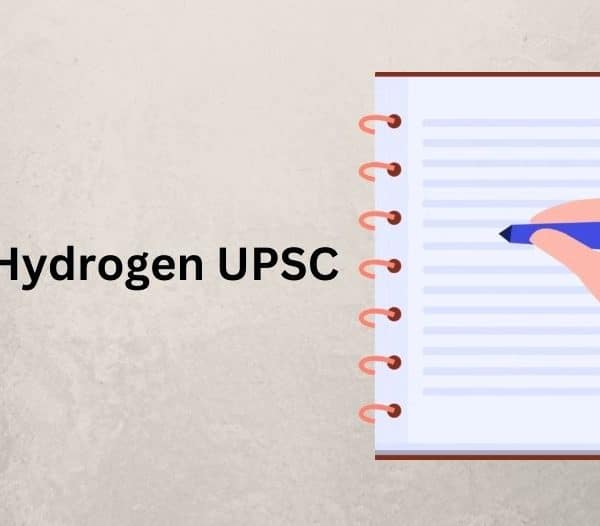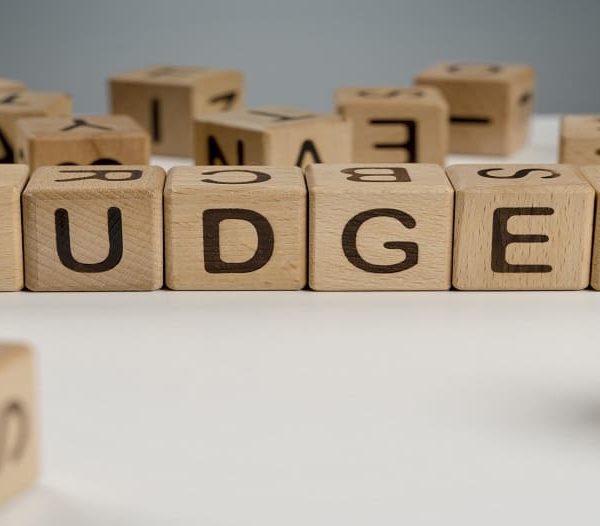Political Science and International Relations Syllabus for UPSC Exams
The UPSC Optional Syllabus for Political Science and International Relations is as given below:
| Political Science and International Relations Syllabus – Civil Services Mains Exam UPSC: |
| Optional Subject consists of 2 papers. Each paper is of 250 marks, making a total of 500 marks. |
| PAPER – I |
| Political Theory and Indian Politics: |
| 1. Political Theory: meaning and approaches. |
| 2. Theories of the State: Liberal, Neoliberal, Marxist, Pluralist, Post-colonial and feminist. |
| 3. Justice: Conceptions of justice with special reference to Rawl’s theory of justice and its communitarian critiques. |
| 4. Equality: Social, political and economic; relationship between equality and freedom; Affirmative action. |
| 5. Rights: Meaning and theories; different kinds of rights; concept of Human Rights. |
| 6. Democracy: Classical and contemporary theories; different models of democracy – representative, participatory and deliberative. |
| 7. Concept of power, hegemony, ideology and legitimacy. |
| 8. Political Ideologies: Liberalism, Socialism, Marxism, Fascism, Gandhism and Feminism. |
| 9. Indian Political Thought: Dharamshastra, Arthashastra and Buddhist traditions; Sir Syed Ahmed Khan, Sri Aurobindo, M.K. Gandhi, B.R. Ambedkar, M.N. Roy. |
| 10. Western Political Thought: Plato, Aristotle, Machiavelli, Hobbes, Locke, John S. Mill, Marx, Gramsci, Hannah Arendt. |
| Indian Government and Politics: |
| 1. Indian Nationalism: |
| (a) Political Strategies of India’s Freedom Struggle: Constitutionalism to mass Satyagraha, Non-cooperation, Civil Disobedience; Militant and revolutionary movements, Peasant and workers’ movements. |
| (b) Perspectives on Indian National Movement: Liberal, Socialist and Marxist; Radical humanist and Dalit. |
| 2. Making of the Indian Constitution: Legacies of the British rule; different social and political perspectives. |
| 3. Salient Features of the Indian Constitution: The Preamble, Fundamental Rights and Duties, Directive Principles; Parliamentary System and Amendment Procedures; Judicial Review and Basic Structure doctrine. |
| 4. (a) Principal Organs of the Union Government: Envisaged role and actual working of the Executive, Legislature and Supreme Court. |
| (b) Principal Organs of the State Government: Envisaged role and actual working of the Executive, Legislature and High Courts. |
| 5. Grassroots Democracy: Panchayati Raj and Municipal Government; significance of 73rd and 74th Amendments; Grassroot movements. |
| 6. Statutory Institutions/Commissions: Election Commission, Comptroller and Auditor General, Finance Commission, Union Public Service Commission, National Commission for Scheduled Castes, National Commission for Scheduled Tribes, National Commission for Women; National Human Rights Commission, National Commission for Minorities, National Backward Classes Commission. |
| 7. Federalism: Constitutional provisions; changing nature of centre-state relations; integrationist tendencies and regional aspirations; inter-state disputes. |
| 8. Planning and Economic Development: Nehruvian and Gandhian perspectives; role of planning and public sector; Green Revolution, land reforms and agrarian relations; liberalilzation and economic reforms. |
| 9. Caste, Religion and Ethnicity in Indian Politics. |
| 10. Party System: National and regional political parties, ideological and social bases of parties; patterns of coalition politics; Pressure groups, trends in electoral behaviour; changing socio- economic profile of Legislators. |
| 11. Social Movements: Civil liberties and human rights movements; women’s movements; environmentalist movements. |
| PAPER – II |
| Comparative Politics and International Relations |
| Comparative Political Analysis and International Politics: |
| 1. Comparative Politics: Nature and major approaches; political economy and political sociology perspectives; limitations of the comparative method. |
| 2. State in comparative perspective: Characteristics and changing nature of the State in capitalist and socialist economies, and, advanced industrial and developing societies. |
| 3. Politics of Representation and Participation: Political parties, pressure groups and social movements in advanced industrial and developing societies. |
| 4. Globalisation: Responses from developed and developing societies. |
| 5. Approaches to the Study of International Relations: Idealist, Realist, Marxist, Functionalist and Systems theory. |
| 6. Key concepts in International Relations: National interest, Security and power; Balance of power and deterrence; Transnational actors and collective security; World capitalist economy and globalisation. |
| 7. Changing International Political Order: |
| (a) Rise of super powers; strategic and ideological Bipolarity, arms race and Cold War; nuclear threat; |
| (b) Non-aligned movement: Aims and achievements; |
| (c) Collapse of the Soviet Union; Unipolarity and American hegemony; relevance of non-alignment in the contemporary world. |
| 8. Evolution of the International Economic System: From Brettonwoods to WTO; Socialist economies and the CMEA (Council for Mutual Economic Assistance); Third World demand for new international economic order; Globalisation of the world economy. |
| 9. United Nations: Envisaged role and actual record; specialized UN agencies-aims and functioning; need for UN reforms. |
| 10. Regionalisation of World Politics: EU, ASEAN, APEC, SAARC, NAFTA. |
| 11. Contemporary Global Concerns: Democracy, human rights, environment, gender justice, terrorism, nuclear proliferation. |
| India and the World: |
| 1. Indian Foreign Policy: Determinants of foreign policy; institutions of policy-making; continuity and change. |
| 2. India’s Contribution to the Non-Alignment Movement: Different phases; current role. |
| 3. India and South Asia: |
| (a) Regional Co-operation: SAARC – past performance and future prospects. |
| (b) South Asia as a Free Trade Area. |
| (c) India’s “Look East” policy. |
| (d) Impediments to regional co-operation: river water disputes; illegal cross-border migration; ethnic conflicts and insurgencies; border disputes. |
| 4. India and the Global South: Relations with Africa and Latin America; leadership role in the demand for NIEO and WTO negotiations. |
| 5. India and the Global Centres of Power: USA, EU, Japan, China and Russia. |
| 6. India and the UN System: Role in UN Peace-keeping; demand for Permanent Seat in the Security Council. |
| 7. India and the Nuclear Question: Changing perceptions and policy. |
| 8. Recent developments in Indian Foreign policy: India’s position on the recent crisis in Afghanistan, Iraq and West Asia, growing relations with US and Israel; vision of a new world order. |
Also Read: How to study International Relations and Affair for UPSC CSE
Show Comments





